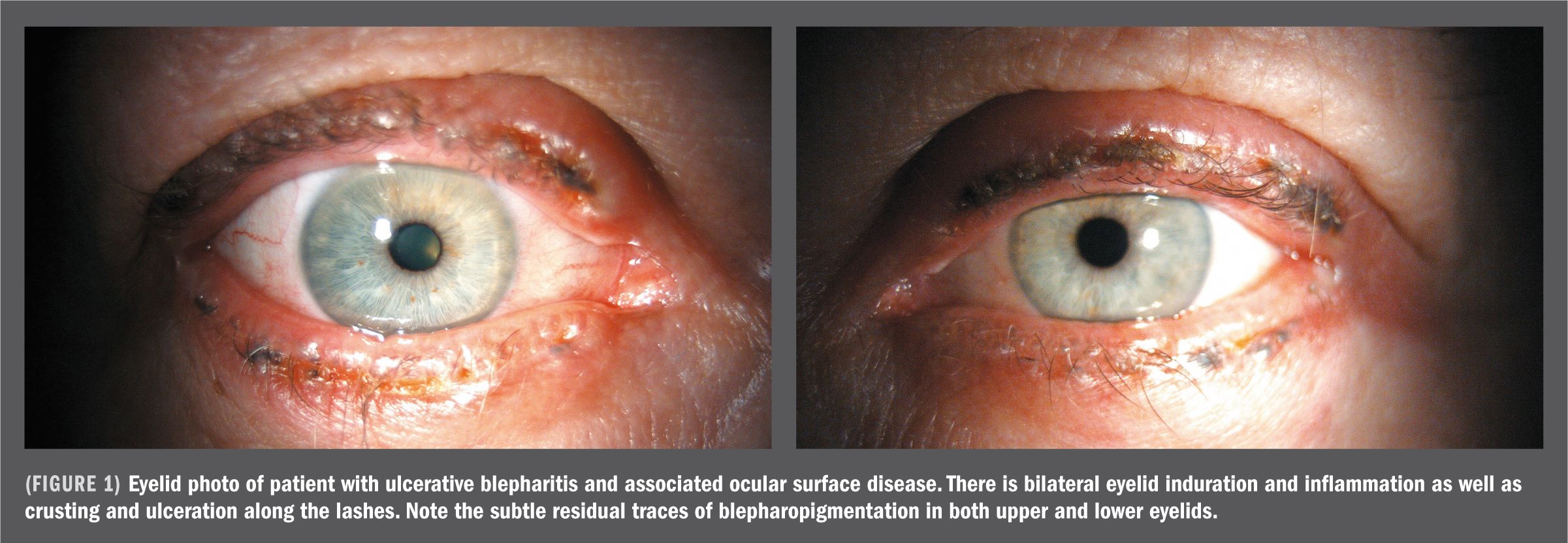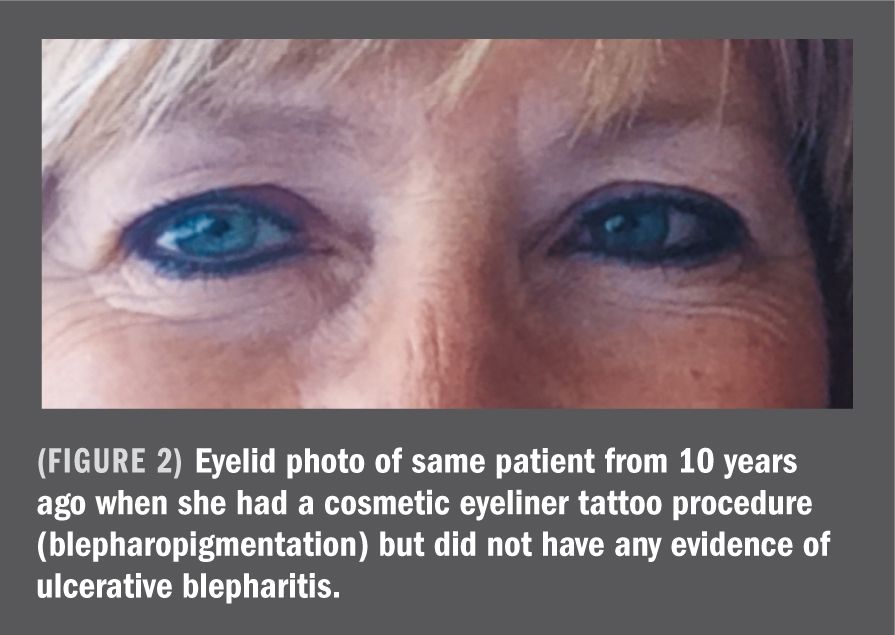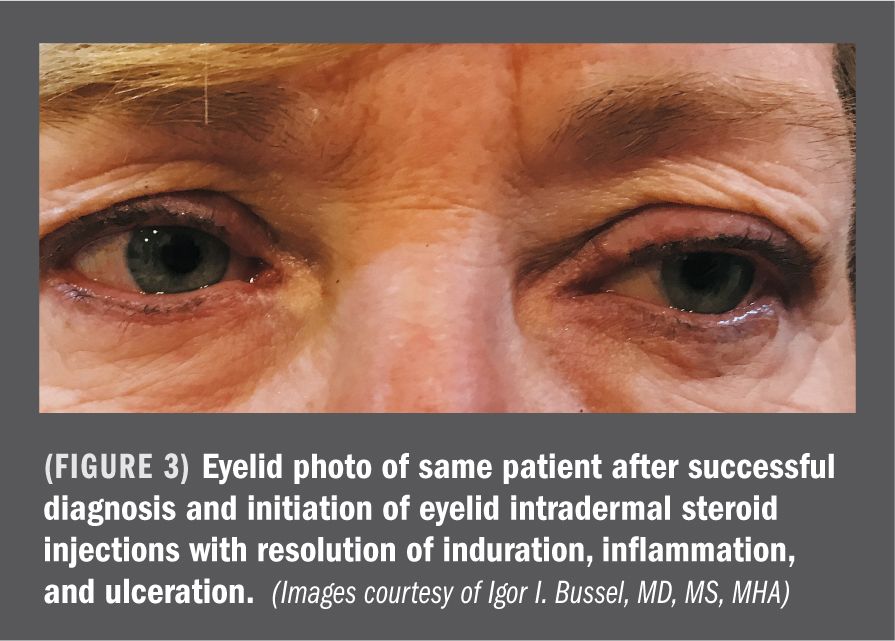Article
Cosmetic eyeliner tattoo as risk factor for ocular surface disease
Ophthalmology Times is pleased to announce Igor I. Bussel, MD, MS, MHA, and Deepinder K. Dhaliwal, MD (faculty sponsor), of the Department of Ophthalmology, University of Pittsburgh/UPMC Eye Center, Pittsburgh, as the second-place winner of the 2017 Resident Writer’s Award Program, sponsored by Allergan. Their entry is featured here.

Ophthalmology Times is pleased to announce Igor I. Bussel, MD, MS, MHA, and Deepinder K. Dhaliwal, MD (faculty sponsor), of the Department of Ophthalmology, University of Pittsburgh/UPMC Eye Center, Pittsburgh, as the second-place winner of the 2017 Resident Writer’s Award Program, sponsored by Allergan. Their entry is featured here.
The Ophthalmology Times Resident Writer’s Award Program is a unique recognition opportunity designed to promote excellence in ocular surface disease education. It was created to acknowledge outstanding case identification and written presentation skills in ophthalmology residents.
Mark P. Breazzano, MD, and co-authors Alia K. Durrani, MD, and Stephen J. Kim, MD, of Vanderbilt Eye Institute, Department of Ophthalmology and Visual Sciences, Vanderbilt University Medical Center, Nashville, TN, are the first-place recipients of this year’s Resident Writer’s Award Program. Their winning submission is featured at OphthalmologyTimes.com/RWAPFirst
By Igor I. Bussel, MD, MS, MHA, and Deepinder K. Dhaliwal, MD; Special to Ophthalmology Times
A 60-year-old Caucasian female was referred to UPMC Eye Center for evaluation and management of progressive eyelid ulceration and ocular surface disease. She reports developing red, irritated eyes and lesions on both eyelids about 6 months ago that have progressed to ulcerations that intermittently bleed.
Her past ocular history was notable for bilateral myopic LASIK in 2000. Her medical history was significant for hypothyroidism and a prior episode of Clostridium difficile infection. She is a former smoker and denied alcohol or drug abuse. She has no known drug allergies and her medication list included: levothyroxine, montelukast, omega-3, multi-vitamin, and vitamin B12.
She had been under the diligent care of a community ophthalmologist and her symptoms had not improved with conservative treatment using warm compresses, Ocusoft scrubs, bacitracin ointment, and artificial tears. An extensive variety of treatment therapies followed, including: Blephamide (Allergan Inc.), Pataday (Alcon Laboratories), and generic steroid eye drops. Besides eye drops, erythromycin and TobraDex (Alcon Laboratories) ointments as well as ketoconazole 2% shampoo, doxycycline, fish oil supplements, and vitamin C were also utilized, but had no effect on the disease process or symptomatology.

Examination
At the time of her referral, ocular examination showed a distance visual acuity of 20/20 and 20/25 in the right and left eye, respectively. Pupils, IOP, motility, and confrontation visual fields were normal. External examination was notable for upper and lower lid edema along with rosacea skin changes.
Slit lamp examination of the anterior segment demonstrated bilateral crusting and ulceration along the lashes as well as eyeliner (Figure 1), papillofollicular reaction of the conjunctiva, superficial punctate keratitis, and LASIK flaps with mild peripheral epithelial ingrowth in the cornea. The anterior chamber was deep and quiet, iris was round and reactive, and the lenses had trace nuclear sclerosis. Dilated fundus examination was unremarkable.
Discussion
Our patient presents with progressive ulcerative blepharitis and associated ocular surface disease that was nonresponsive to conservative and higher level therapies. The differential for this presentation is broad and includes infection (bacterial, viral, fungal, Demodex), carcinoma (squamous, basal, and sebaceous), autoimmune (sarcoid, lupus), rosacea, allergic and seborrheic dermatitis, erythema multiforme, and ichthyosis.
Given the extensive ocular treatments, we thought it would be prudent to take a step back and look at the disease presentation with a new set of eyes.
We stopped all topical eye medications and lid hygiene as well as obtained a smear/culture for viral, fungal, and bacterial infections. There was no Demodex noted on evaluation of epilated lashes. Viral and fungal studies were negative while both eyelids grew coagulase-negative mannitol-negative staphylococci and coagulase-negative mannitol-positive staphylococci and diphtheroids. Based on bacterial sensitivities, bacitracin ointment was restarted and Avenova (NovaBay Pharmaceuticals) was initiated as an adjuvant for a daily gentle lid hygiene routine. Despite escalating therapies with HydroEye (ScienceBased Health), doxycycline, and a Medrol DosePak (Pfizer Inc.), the ulcerations continued to worsen.
Basic laboratory evaluation and clinical presentation did not necessitate an autoimmune work-up. Ultimately, an eyelid biopsy was pursued and revealed extensive necrotizing granulomatous dermatitis and no evidence of carcinoma. After multiple extensive discussions, the patient remembered she had a cosmetic eyeliner tattoo procedure performed 10 years ago (Figure 2).


This patient had progressive ulcerative blepharitis and associated ocular surface disease with no clinical response to anti-infective and anti-inflammatory treatment. By process of exclusion based on the differential diagnosis with supporting evidence from the eyelid biopsy, she was determined to have an allergic granulomatous reaction to blepharopigmentation (eyeliner tattoo).
She was started on eyelid intradermal Kenalog (Bristol-Myers Squibb) injections along indurated areas and showed great improvement with resolution of ulcers after two rounds of injections (Figure 3).
Blepharopigmentation, commercially known as eyeliner tattoo, involves the introduction of ferrous oxide or other metallic pigment into the eyelid margin with a needle of microblade. This procedure is marketed as “permanent,” although pigmentation typically fades over years. While it was originally performed by physicians, it is now mostly done by cosmetologists with freehand tattooing or blading the eyelid.
Only a few cases of allergic granulomatous reaction to blepharopigmentation have been reported in the literature.1–4 This reaction causes chronic inflammation that can lead to permanent scarring, lid deformity, eyelash loss and misdirection. Blepharopigmentation has been demonstrated to cause meibomian gland loss,5 tear film and ocular surface abnormalities,6 as well as trigger diffuse lamellar keratitis.7
Conclusion
Ophthalmologists should consider cosmetic permanent eyeliner tattoos (blepharopigmentation) as a risk-factor for ocular surface disease.
Allergic granulomatous reaction to blepharopigmentation should be on the differential diagnosis for patients presenting with ulcerative blepharitis and associated ocular surface disease resistant to medical therapy.
A careful history is critical because patients often can think of it as a cosmetic treatment and not attribute it to be an invasive medical procedure. The degree of pigmentation can fade in time but a delayed allergic reaction can still develop years later.
References
1. Bee CR, Steele EA, White KP, Wilson DJ. Tattoo granuloma of the eyelid mimicking carcinoma. Ophthal Plast Reconstr Surg. 2014;30:e15–e17.
2. Vagefi MR, Dragan L, Hughes SM, et al. Adverse reactions to permanent eyeliner tattoo. Ophthal Plast Reconstr Surg. 2006;22:48–51.
3. Schwarze HP, Giordano-Labadie F, Loche F, et al. Delayed-hypersensitivity granulomatous reaction induced by blepharopigmentation with aluminum-silicate. J Am Acad Dermatol. 2000;42:888–891.
4. Goldberg RA, Shorr N. Complications of blepharo-pigmentation. Ophthalmic Surg. 1989;20:420–423.
5. Lee YB, Kim JJ, Hyon JY, et al. Eyelid tattooing induces meibomian gland loss and tear film instability. Cornea. 2015;34:750–755.
6. Kojima T, Dogru M, Matsumoto Y, et al. Tear film and ocular surface abnormalities after eyelid tattooing. Ophthal Plast Reconstr Surg. 2005;21:69–71.
7. Lu C-W, Liu X-F, Zhou D-D, et al. Bilateral diffuse lamellar keratitis triggered by permanent eyeliner tattoo treatment: A case report. Exp Ther Med. 2017;14:283–285.
Newsletter
Don’t miss out—get Ophthalmology Times updates on the latest clinical advancements and expert interviews, straight to your inbox.




